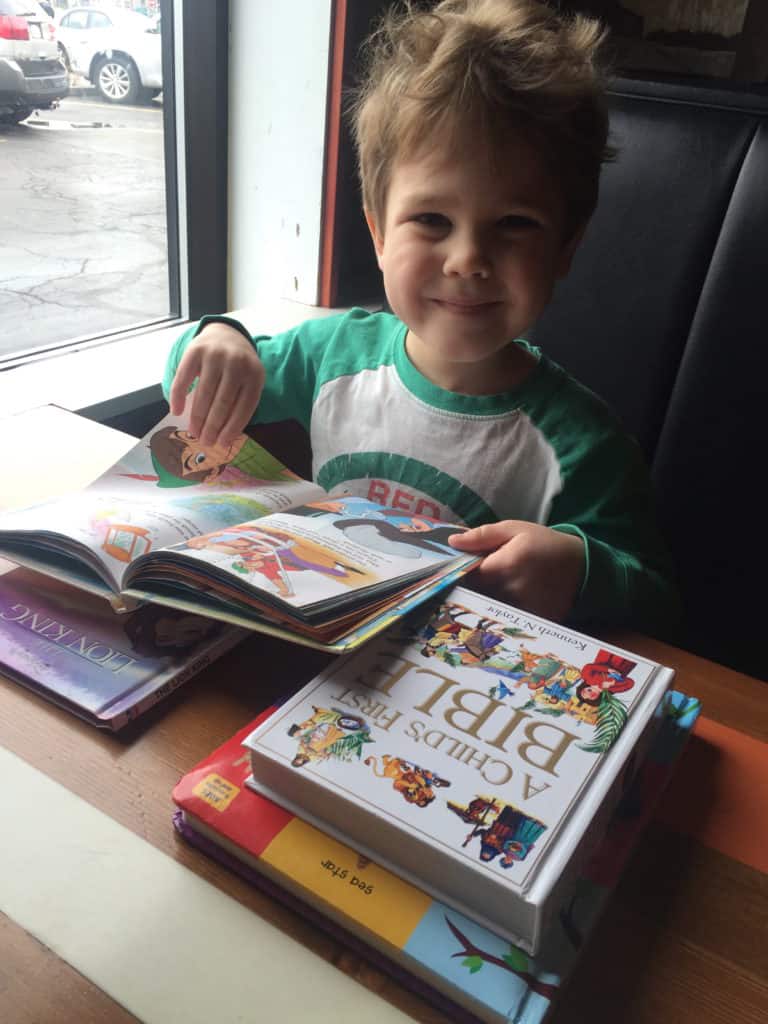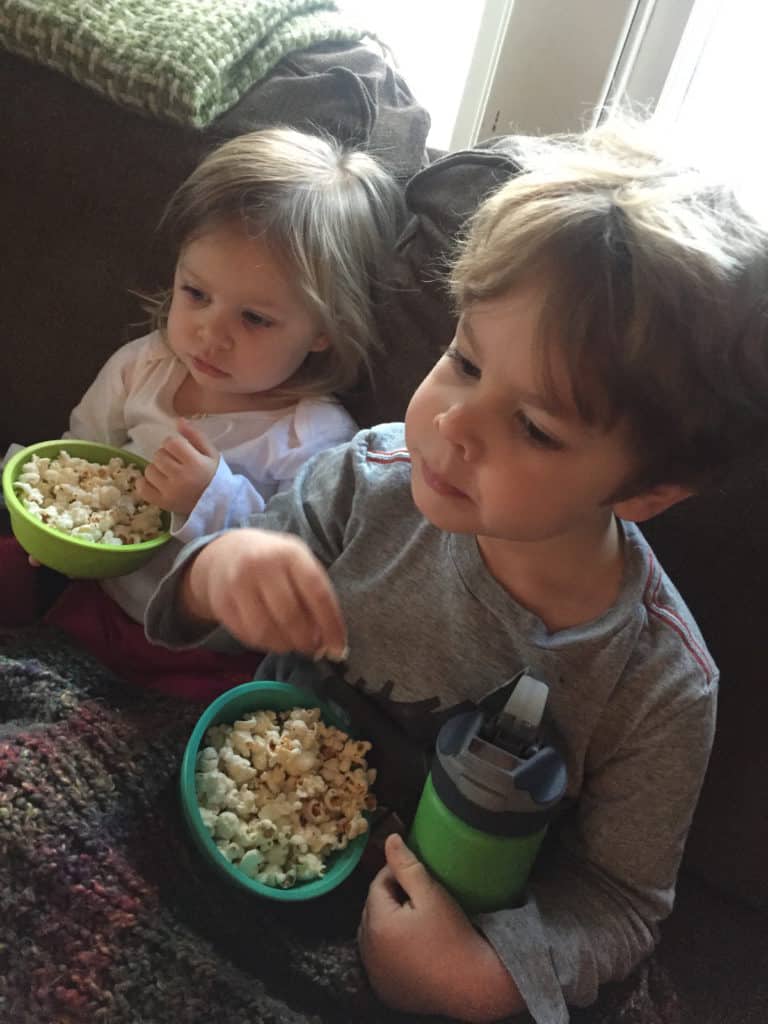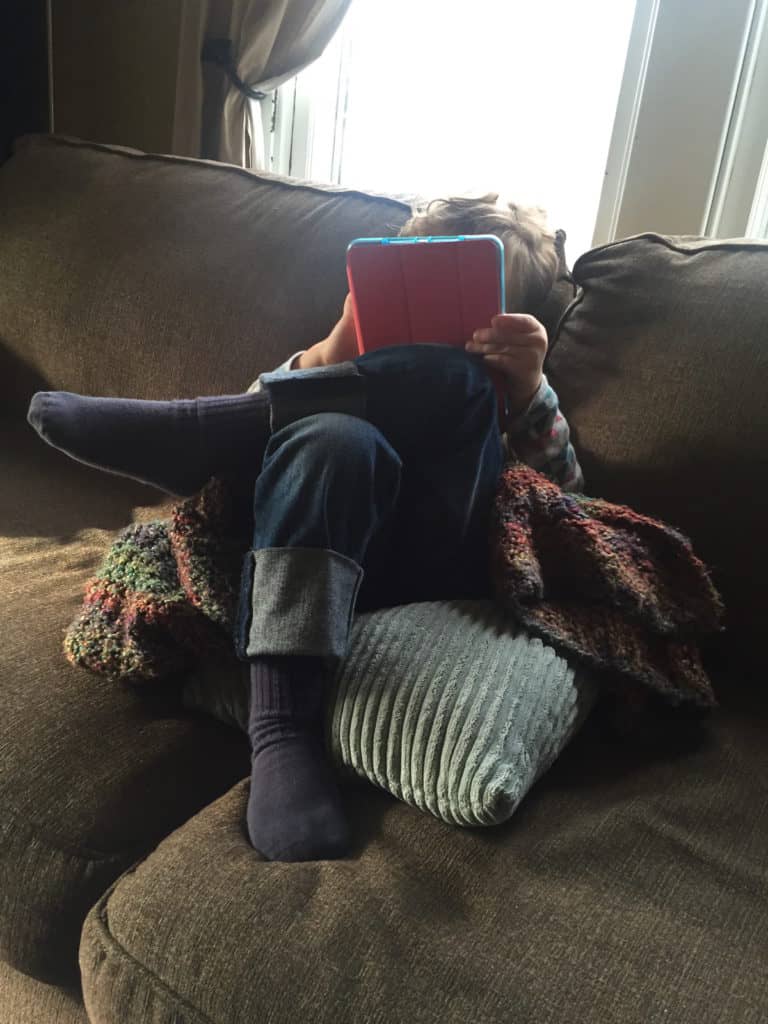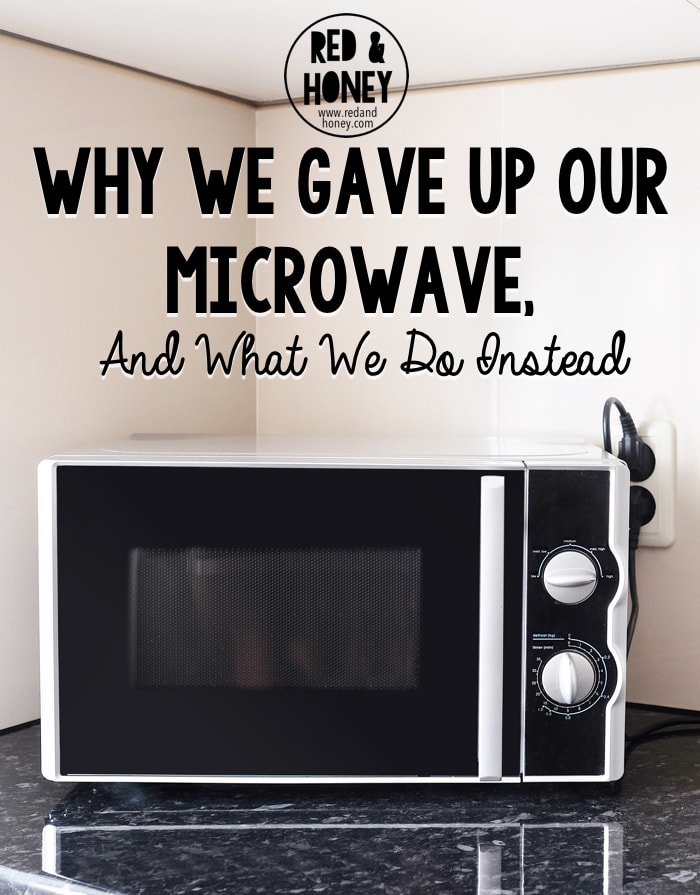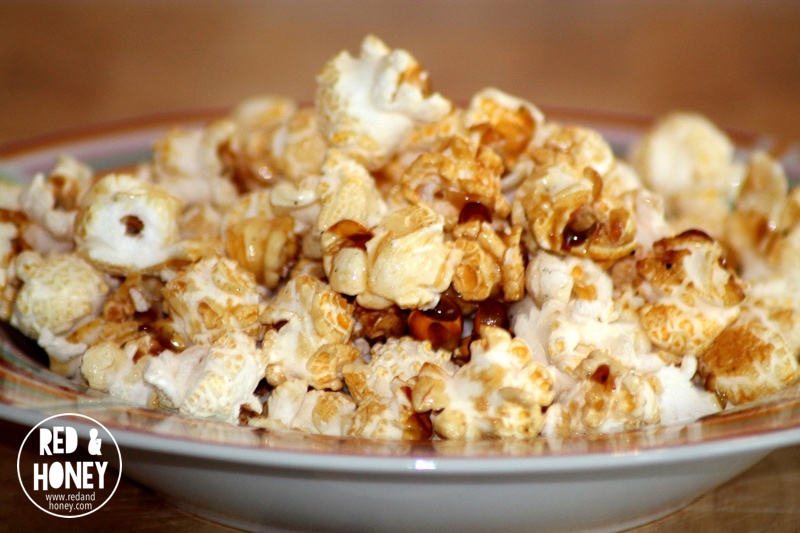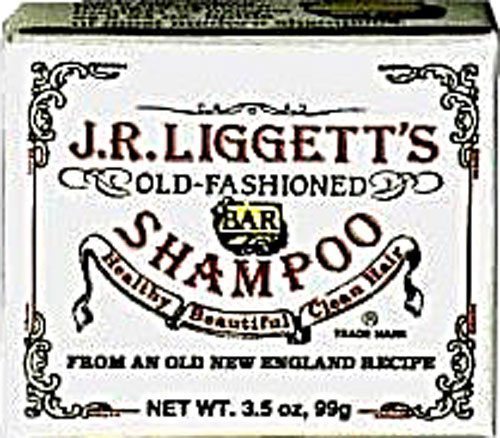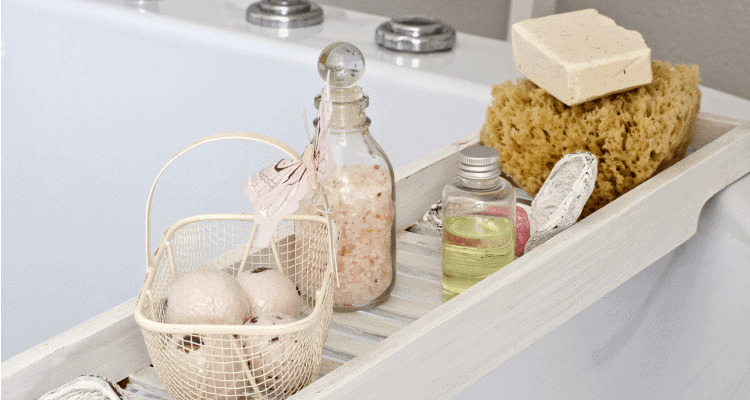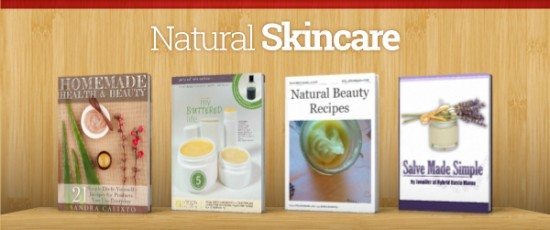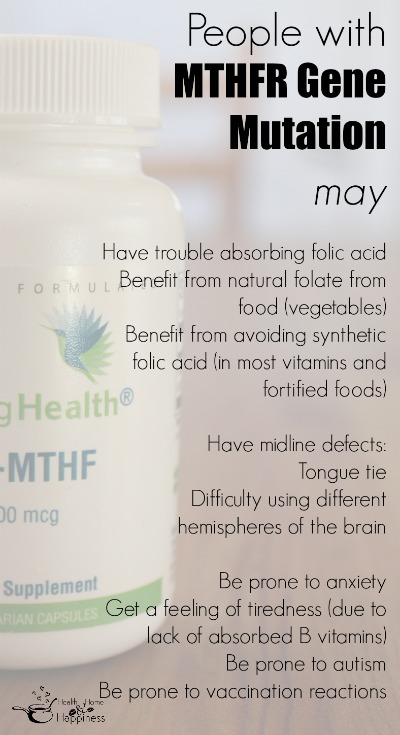When we brought our youngest home from the hospital two years ago, she was sleepy and quiet and dreamy. She rested well in my lap or on my chest, but it became obvious within a few weeks that this was really the only way she’d sleep peacefully.
By the time Eloise was about three weeks old, we had settled into a challenging evening routine–we’d have just put our oldest to bed when our littlest would ramp up, crying to nurse almost every hour from eight or so on.
If I tried to lay her down before one or two in the morning, she would wake up screaming full tilt, and we’d start the sometimes hours-long calming process all over again.
I remember asking my husband to take her for “just a minute,” to run and change laundry or to grab a glass of water. No matter how well he rocked her, paced with her, shushed her, sang to her…she just screamed. This became our norm–and a maddening one. I never felt released to be anywhere but on the couch with her, and my husband never felt like he could help in a tangible way.
We were exhausted.
Night after night we’d settle our eldest in, take a very deep breath, and head into five or six hours of nursing, crying, shifting, burping, and essentially trouble-shooting our baby.
At a doctor’s appointment, I asked about allergies or reactions to something in her environment, and our doctor suggested reflux. I wasn’t keen on pumping Eloise full of medicine that we weren’t sure was the ticket, but after a few more weeks with no relief or change, I thought it was worth a try. The long and often sleepless nights were getting to all of us, and I didn’t want Eloise to be struggling if we could help her.
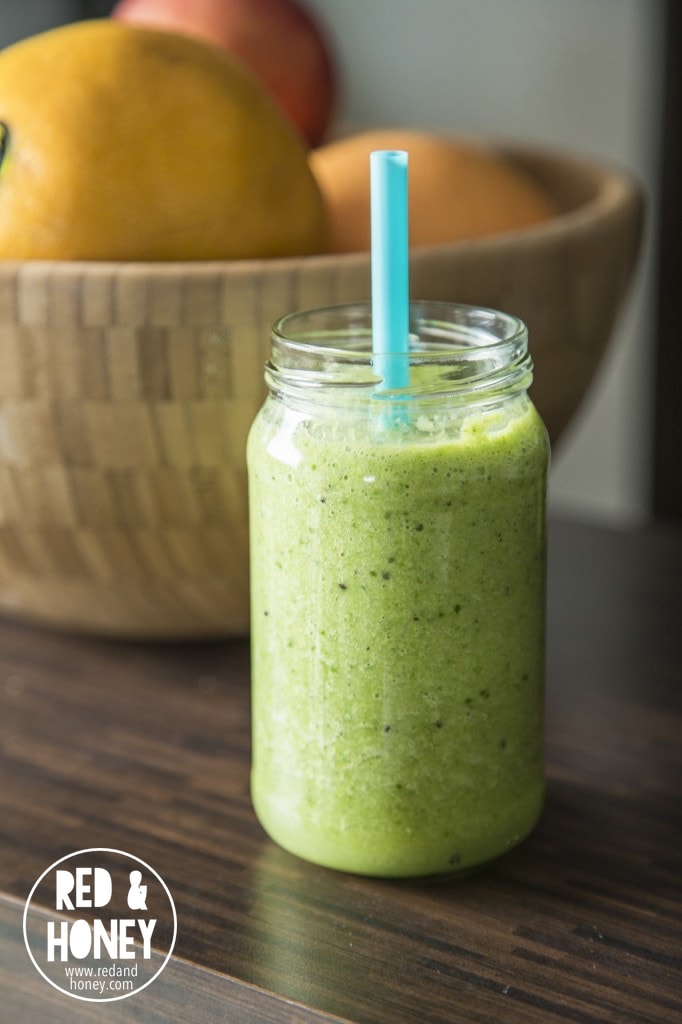
We gave her several weeks of reflux medication, eventually tried a second, stronger medicine, and after a few more weeks without noticeable change, stopped the meds altogether.
It had been five, wearing months, and it was pretty obvious to me that our baby girl was still no less miserable. We’d tried all of the obvious things…position changes, gas drops, gripe water, rocking, bouncing, swaying, walking. We’d played music, talked with her, poured over sleep books, asked friends, prayed like crazy. I’m sure there was more, but those months were such a blur to all of us!
I wanted so badly to be this energetic, upbeat mama, but I was struggling just to stay awake. Our oldest was as patient as a two year old can be, and yet, the season had taken too much of a toll.
I was desperate for an answer.
It occurred to me that I’d had very adverse reactions to dairy and eggs while pregnant with Eloise, and the thought wouldn’t leave me alone, so we went back to the doctor to ask about possible allergies again. He suggested that an allergy at Eloise’s age would likely only be eggs or dairy (lightbulb!), and I asked how to proceed.
I could have guessed at the answer, but I’m not sure I wanted to hear it: I needed to stop consuming any and all dairy to see if it would make a difference. As Eloise was still only nursing at this point, it was really up to me to make the change and see what happened.
I left the office that day with a mama’s resolve, and I didn’t touch even a trace of dairy for the next week.
Almost exactly a week into my dairy hiatus, Eloise started to shift in the evenings. I noticed that I could put her down a little earlier at night without any repercussion. She seemed sleepy at nights, and much less fussy. We gave it another week.
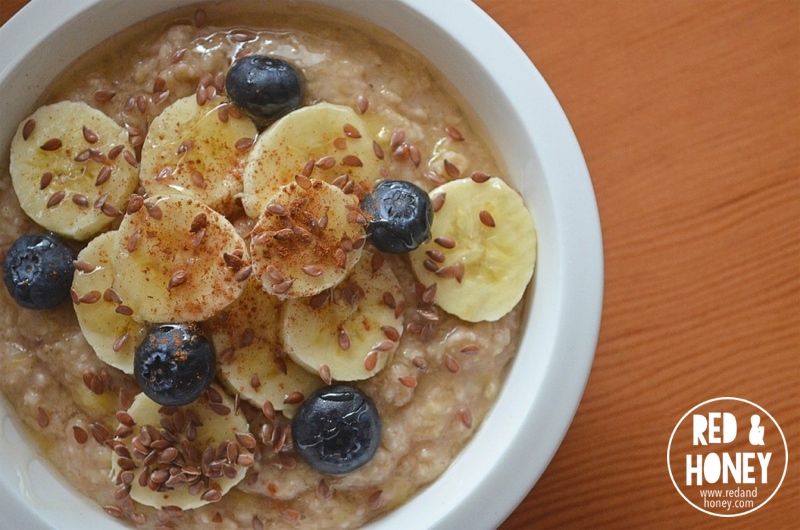
Two weeks into my dairy free adventure, Eloise was a new baby.
She was happy during the day and ready to go to bed at night. She didn’t look at us like she was in pain, and I stopped feeling so helpless. It was empowering to think I could help her to be well, and as an added bonus, I started feeling better, too.
It took us about two months to recover from our sleepless nights, but between getting more rest and eliminating dairy in our diets, we were feeling pretty great by the time Eloise was ready for table food. She started out with avocados, mashed bananas, and any whole food I could puree. And she was happy as a clam.
Our nursing and snuggling relationship became more and more positive and far less exhausting. I noticed major changes in my energy level and in the way I felt after meals. I decided to implement the change for our oldest, too.
Once I removed dairy from our son’s diet, I was able to recognize new patterns in him as well. Occasionally he’d have a piece of string cheese or little bit of yogurt. Before long, I realized that his behavior was different after there’d been any dairy in his day.
If Henry avoided dairy, his listening and obedience was delightful. He was attentive, agreeable, calm. But if I caved and said yes to a dairy-laden treat, our super sweet eldest became more irritable, erratic and distracted. His reaction wasn’t over the top, but it was noticeably different from the norm. And then after awhile, he started to self-censor. We met up for dinner one night with friends and we gave Henry a piece of pizza. Within half an hour, his stomach was upset and he asked to go home.
In school, he settled into the idea of bringing a snack from home on days that dairy was being served. If we said yes to another cheese stick or to cheese on a sandwich, we all felt the impact later.
Nowadays, Henry decides every once in a while that he’d like to have something containing dairy, but he often says no to pizza and other treats that most four year olds would grab in a hot minute. I think he’s just learning his body and knows what makes him feel good and bad. I’m so thankful.
I nursed Eloise until I needed to be away from her for five days (she would never take a bottle, so pumping was, sadly, of out of the question). I was sad to end what had become a very healthy, healing nursing relationship with her. She was fourteen months old.
The upside (or so I thought) was that I could add dairy back into my life now that Eloise wasn’t dependent on me for milk. Within a day or two of indulging, I could tell that my dairy-consuming days were officially over.
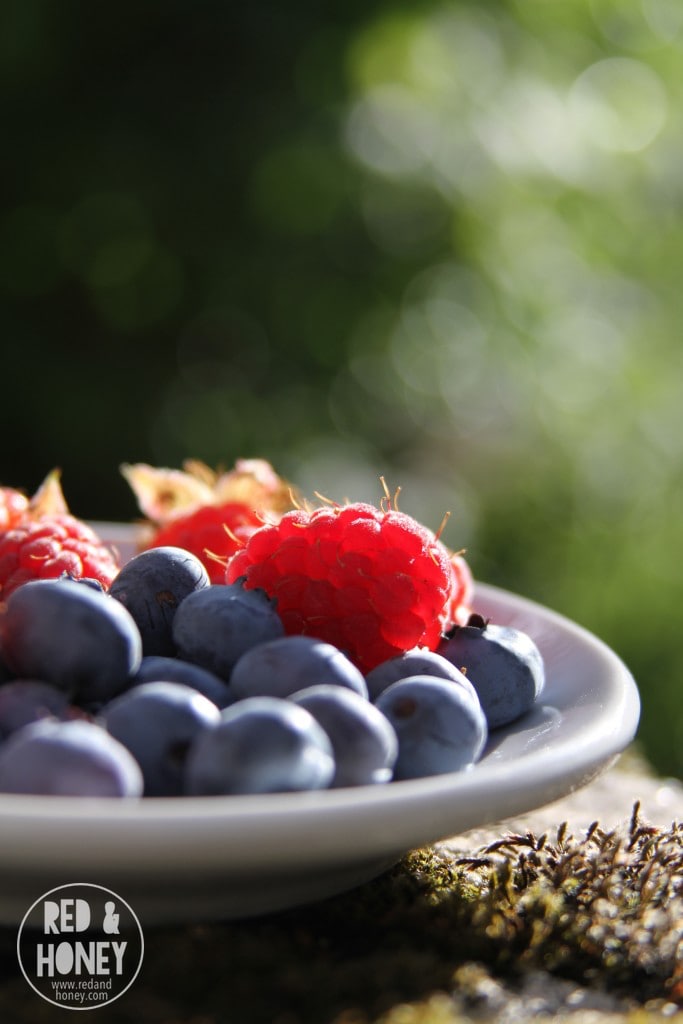
I started to get terrible headaches (much like I’d had when I consumed dairy during pregnancy), and my digestive system was completely out of whack. I decided then and there that I’d eat in solidarity with Eloise, and that she and I would be on our dairy free adventure together for as long as it felt healthy and viable to do so.
Henry joins us on most days, with the occasional (and sometimes regretful) dairy treat, and dad can still consume dairy without much trouble. Still, for meals around the table we are a dairy free family, because that’s what works best for the majority and we never want to leave Eloise out of the mix when we’re sitting down to a meal together.
We know from our individual responses that dairy isn’t an allergy in our family, but definitely an intolerance that we share to varying degrees. People often ask whether we’ve had Eloise tested for allergies, but we’ve decided not to put her through the paces of testing at her age unless it becomes completely necessary.
We know from (accidental) trial and error that she still gets an upset stomach when dairy crosses her path, and I’m happy to continue exploring dairy free recipes and menus that serve our whole family well at this stage of our lives.
Sometimes life without dairy feels inconvenient (read: all summer long when ice cream sounds good to everyone ;), but largely, the benefits of feeling well far outweigh the occasional inconvenience of avoiding dairy items in restaurants or at the grocery store. We have grown to enjoy almond milk, dairy free yogurt, coconut oil, and cashew milk for cooking. I love using nutritional yeast on top of things like taco salad, or in other dishes where I’m still craving a cheesy flavor, and I’ve found amazing recipes in vegan cookbooks that we’ve all grown to love.
Really, becoming dairy free has shifted from a challenging adventure to a way of life for us. I take great joy in nourishing our family with whole foods, have grown comfortable in a dairy free kitchen, and now realize that life without ice cream and milk and cheese means I feel cleaner, healthier and more energized than before.
As for our little lady, she has never known what she’s “missing” where dairy is concerned, but she is happy and healthy, and has a voracious appetite. She is growing well and enjoying so many of the good things in life as a toddler: fruits, vegetables, smoothies, clean proteins, fresh fruit popsicles, guacamole, trail mix and so, so much more.
Being dairy free is one of the best shifts we’ve implemented as a family. I don’t know whether it will last for a few more years, or for a lifetime. I do know that it’s both comforting and empowering to watch our kiddos make nutritional choices for themselves at an early age, and to see that–at least for now, we’re all thriving on the foods that serve our bodies best.
If you have questions about making the dairy free shift, I’d love to hear from you! Comment below or send a message my way at mollymadonna@gmail.com. I’ll never claim to be an expert, but I’ve learned a lot along the way Let’s journey together!
Have you eliminated dairy (or other triggering foods) from your diet, and seen improvement? Share below!
Original article and pictures take redandhoney.com site


